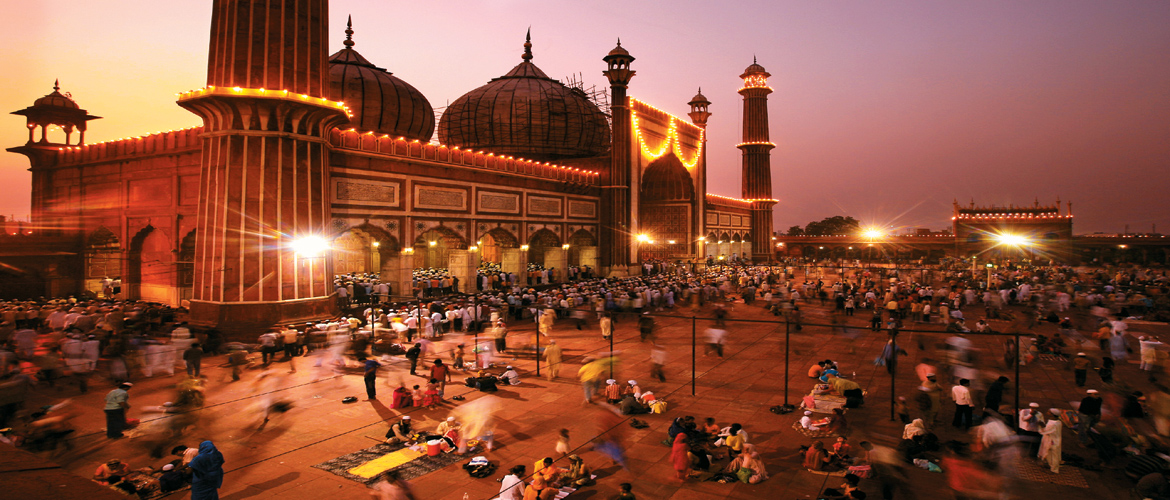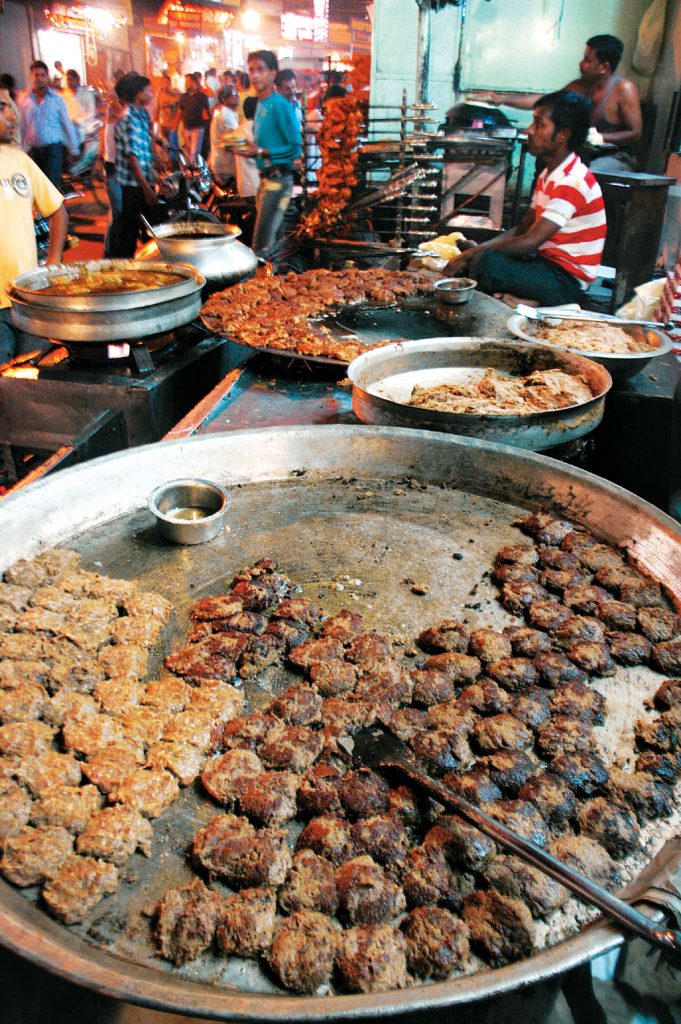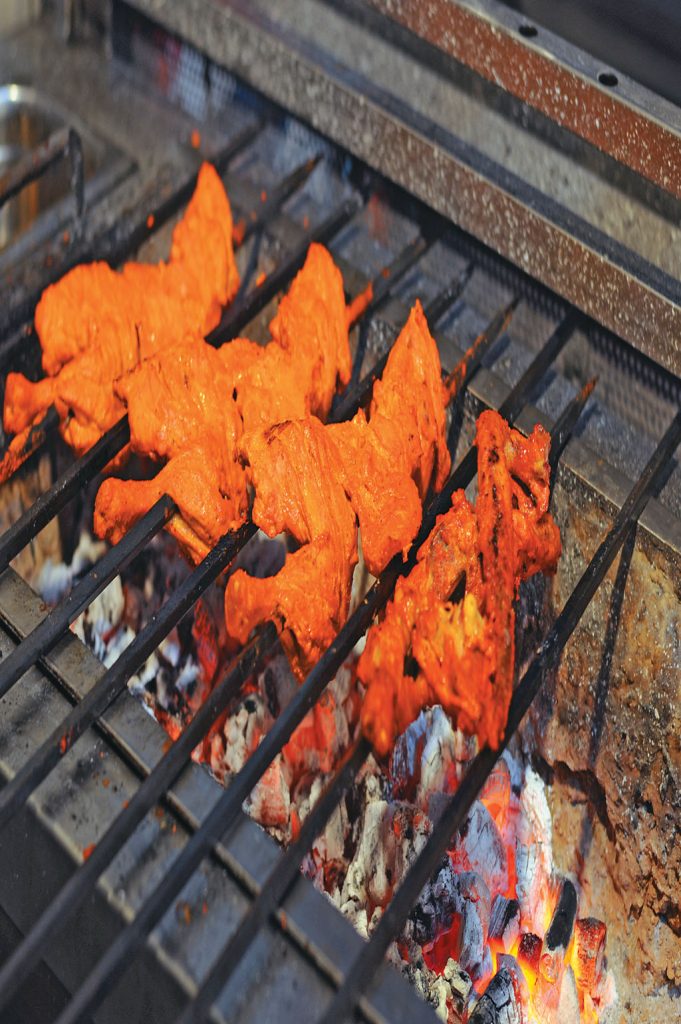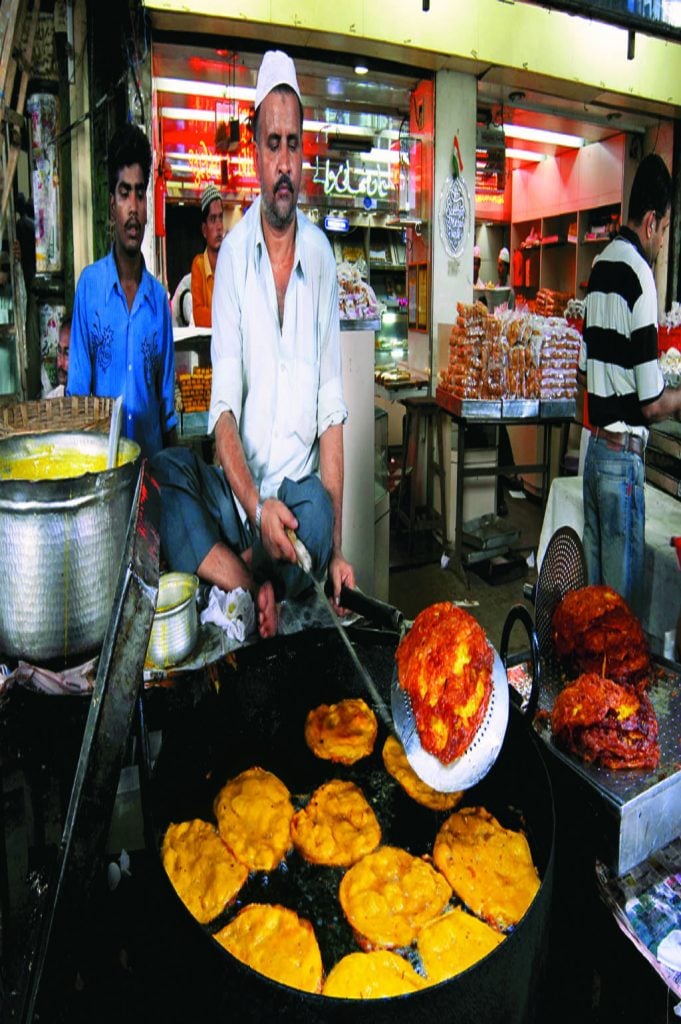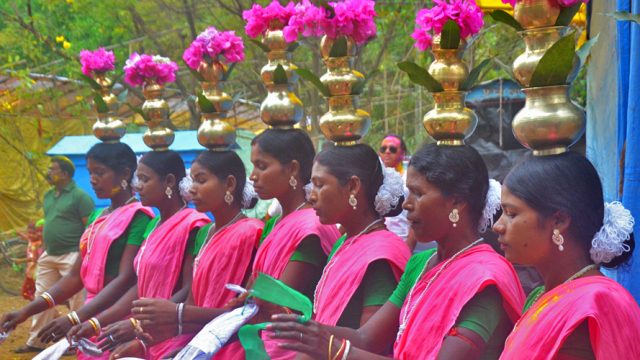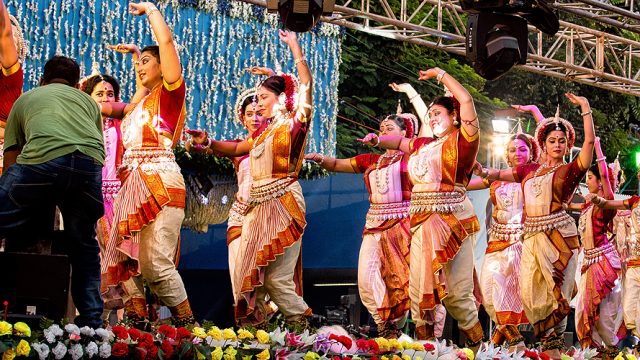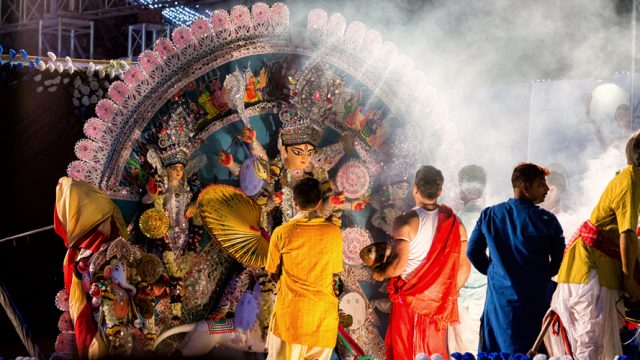Type Religious festival Time 29–30 days in june–July Location across india No food, no water, no
The ninth month of the Islamic calendar, Ramzan begins with the sighting of the crescent moon. The calendar is lunar and has fewer days than the solar Gregorian calendar. Thus, it begins 10–11 days earlier every year and every 33 years, it occurs on the same date. Due to its dependence on the sighting of the moon, one never knows the precise date until the last moment. There is much confusion, debates between clerics, proclamations and counter-proc-lamations regarding the precise date, often resulting in different places celebrating the festival on different days, even within the same country.
Nevertheless, once the date is established, people begin preparing for the month of spiritual absolution. The most important feature of Ramzan is abstinence (roza or sawm) – not only from food and water in the period from dusk to dawn, but also from sins and pleasures. Sawm
is the fourth of the five ‘pillars of Islam’. In addition, one must give to charity and help others – zakat (religious obligation to charity) is the fifth pillar of Islam. This helps one cultivate empathy for the underprivileged and become more compassionate. Moreover, without the distractions of pleasures and gratification, one is free to direct their minds uniquely towards God.
A day during Ramzan begins before dawn, when people partake of sehri, the meal that equips one for a long day of fasting. The menu varies from home to home and region to region, but is usually something light or leftovers from dinner downed with copious amounts of water. This is followed by fajr, one of the five daily namaaz (prayers) that is enjoined on every Muslim. In the evening, preparations are made for iftar, the meal to break the fast. As soon as the sun sets, the azan (call to prayer) declares the end of the fast for the day.

It is customary to break the fast with dates and a glass of water – a practice that is said to date back to the time of the Prophet. Although the dishes served for iftar vary from region to region and home to home, some of the most common items are chilli, brinjal, spinach and onion pakodas (fritters), samosas, chhole (chickpeas), chana (black gram) and fruit chaat or a platter of seasonal fruits. Drinks such as lemonade and roohafza (a sweet rose-flavoured beverage) are also popular. While some families prefer to have a light meal at iftar followed by a heavy dinner, others make a feast out of it. In many Muslim localities, vendors sell iftar delicacies in the evening. Most large mosques serve iftar free – they collect dishes donated from various homes, which results in an eclectic spread. Across India, there is also a trend of ‘iftar parties’ – parties thrown by politicians during Ramzan to build alliances and curry favour with their constituents.
After iftar, people perform the maghrib prayer, which is followed by dinner. Then, they head to mosques for the last prayer of the day, isha. Some perform an additional set of prayers known as tarawih, in which they recite a chapter of the Quran each day, thereby reciting the entire 30 chapters of the book over the month. The pious often stay up all night to perform prayers and read the Quran, especially on Laylat-ul-Qadr, the auspicious day when the Quran was revealed to the Prophet. Prayers on this night are considered more rewarding than a thousand months of worship.

However, Ramzan is not just about fasting and fervent religiosity – the days of austerities are inevitably followed by nights of feasting and merrymaking. Hundreds of eateries spring up and dish out special preparations and delicacies. It is customary to buy new clothes and for many tourists, shopping is the highlight of Ramzan. In many towns, the markets are lively and crowded all night, especially on the last few days.
The month of fasting culminates in the three-day-long festival of Eid-ul-Fitr, also known as meethi Eid (literally ‘sweet Eid’) or simply, Eid. The day begins with the Eid prayer, which is usually held in a large, open ground known as eidgah. Most cities have one major eidgah and many smaller ones. Before the prayer, it is customary to have dates soaked in milk and give alms to the poor. Then, armed with prayer mats, people head to the eidgah and assemble in lines. When the prayer ends, people greet each other with salutations of Eid Mubarak and three hugs alternately on each shoulder. Later in the day, friends and relatives visit each other and enjoy lavish feasts. Desserts made from sewaiyan (vermicelli) are a hallmark of Eid.

Things to See & Do
Although Ramzan and Eid are observed across the country, it is at the celebrations in the predominantly Muslim localities of major cities such as Delhi and Hyderabad that you can experience the festival at its most exuberant. The markets, mosques, eidgahs and eateries are major attractions. If possible, try to visit people’s homes, where you can experience the festivities and cuisine at close quarters. It is not unusual for residents to invite camera-toting tourists for iftars in their homes or to local iftar parties, especially in smaller towns.
Delhi
As the former seat of the Mughal empire, Delhi has a long and glorious tradition of Ramzan and Eid celebrations. The localities of Old Delhi and Jamia Nagar are the most lively at this time. The areas around Jama Masjid in Old Delhi, such as Matia Mahal and Ballimaran, have a carni-valesque atmosphere. The streets are decorated and many stalls are put up. Vendors selling dates and sewaiyan are omnipresent, with some offering more than a hundred varieties of the fruit.
It might take the entire month of Ramzan to do justice to the delicacies that Old Delhi has to offer. Entire streets are lined with eateries, each selling different preparations of the smorgasbord of Mughlai cuisine. Every visitor makes a pit stop at the legendary Karim’s and its lesser-known neighbor Al Jawahar. Both serve tantalising tandoori preparations, biryani and rich curries of chicken, mutton and offal. Kallan Sweets has an appetising repertoire of desserts – shahi tukda, rabri, gulab jamun and moong dal halwa. Haij Tea Point is known for its creamy lassi, shakes, tea and coffee. Other renowned eateries are Aslam Chicken Corner, Pehelwan Biryani Wale, Cool Point, Bilal and Haji Mohd Hussain Fried Chicken. Many hobby groups, such as Delhi Food Walks (W delhifoodwalks.com), conduct gastronomic tours of Old Delhi during Ramzan.

Jamia Nagar is quite similar to Old Delhi, except for the historical legacy. This locality, set on the banks of the Yamuna, has eateries that are as good as the ones in the old city, albeit not as famous. Purani Dilli and Moonis Kada serve excellent chicken and mutton stews and kebabs, while Jawed Nihari Hotel dishes out a fearsome nihari (a spicy, slow-cooked stew of mutton or beef, garnished with lemon and coriander). Al Nawas is famous for its aromatic biryanis. Many vendors sell cheap seekh kebabs and rolls made from buffalo meat. The clothing stores in Jamia Nagar have a great variety of Indian wear, such as kurtas, pajamas, sherwanis, churidars and lehengas.
Some of the most popular locations for the Eid prayer are the Jama Masjid and Fatehpuri Masjid in Old Delhi and Shahi Eidgah in Sadar Bazaar. Often, the crowds are so enormous that even the streets outside the mosques are filled with endless lines of namaazis.
Tip Most places are shut during the fasting hours and come to life only around twilight. In case you visit during the day, you might still find the odd restaurant open that serves patrons behind curtains to ward off the disapproving glares of the faithful! The fastest and most convenient way to navigate the markets is on foot – vehicles can get stranded in traffic for hours

Lucknow
The bustling Chowk, a well-known landmark of Lucknow, becomes even more lively and frenetic during Ramzan. The narrow streets of the old city are chock-a-block with stalls, vendors and hawkers. Families throng the market to pick up clothes, footwear, decorative items, toys, confectioneries and savouries. The market is also a hub of chikankari, the traditional embroidery that Lucknow is famous for.
- A variety of tempting food available for iftar
It is in and around Chowk that some of the most famous delicacies of Lucknow can be enjoyed. The iconic Tunday Kebabi, a ramshackle eatery tucked away in a bylane, is famous for its buttery kebabs that dissolve at the first bite, releasing a cornucopia of flavours. In fact, so well-known is the place that it does not even have a signboard – everyone is expected to know where it is! Idris ki Biryani is one of the contenders for the best biryani in town. At the many roadside stalls, you can have chaat, a variety of kebabs and qormas, breads such as baqarkhani and sheermal and desserts such as kheer (rice pudding) and nimish (a feather-textured dessert made of cream). Vendors roam around with samovars, pouring out cups of aromatic tea. Finish your gastronomic excursion with paan – the perfect digestif.
Other places in Lucknow where you can go feasting and shopping are Aminabad, Maulviganj, Rakabganj, Yahiyaganj, and Nakhhas. The Eid namaz at Aishbagh Eidgah, possibly the largest eidgah in the state of Uttar Pradesh, and Aasifi Masjid draw thousands of people.

Mumbai
During Ramzan, many Mumbaikars make a trip to Mohammed Ali Road, located in the southern part of the city. The neighbourhood is famous for its meaty cuisine and rich desserts that help people prepare for the next day’s fast.
The stretch of the road from Crawford Market to Bohri Mohalla has an endless line of restaurants, and tiny eateries, each with their distinctive dishes and cooking styles. There are also shops which sell bags, clothes, jewellery and knick-knacks. The crowds are thick and jostling is common, but that just adds to the liveliness of the place. As soon as you start walking on the road, your senses are besieged by a cornucopia of aromas – smoke from coal-fired barbeques, spices sputtering in hot oil, pungent meaty gravies and the cloying sweetness of caramelised sugar.
Start your gastronomic indulgences at Chinese N Grill, which is famous for its tandoori chicken and chicken tikka. The tandoori quail and pahadi chicken kebabs, neatly arranged on skewers at the Janta Fast Food Centre, are irresistible. For those with a more adventurous palate, there is the zuban fry (deep-fried goat tongue) at Bademiya. The famous outlet also serves zuban soup, dil (heart) tawa fry and dil soup. At Bismilla’s stall, you can try roasted or fried khiri (udders) and kaleji (liver). For dessert, head to Noorani Milk Centre to try the gigantic malpuas or the phirni at Suleman Mithaiwala.

There are many mosques in Mumbai belonging to various sects such as Bohras, Khojas, Sunnis and Shias. The most spectacular of all shrines is the Haji Ali Dargah, located on a rocky island in the Arabian Sea. During Ramzan and Eid, there is a constant stream of devotees visiting the shrine.
Hyderabad
With its large Muslim population and the rich legacy of the Nizam dynasty, the Ramzan and Eid revelries of the city are the grandest of all in south India. Although there are certain pockets of Hyderabad which are more vibrant than others, the festive spirit pervades the entire city.
The Old City, especially, is decked up in its jubilant best. Largely somnolent during the day, the area wakes up at twilight and is pulsing with energy by nightfall. Numerous shops selling fancy footwear, elaborate Indian outfits, the famous-stone studded Hyderabadi bangles and pearls make shopping here a delightful experience. The area keeps buzzing with activity throughout the night, almost until dawn.
Ramzan in Hyderabad is synonymous with haleem, a creamy stew made of meat, lentils and wheat pounded into a thick paste and slow-cooked throughout the day. During Ramzan, as many as 6,000 vendors sell haleem, though the most famous are Pista House and Shah Ghouse. For biryani, head to Shadab. There are many bandis (stalls) around Charminar that make a wide variety of dosas. Chicken 65 and mutton kebabs are freshly made and sold on the roadside. The desserts of double ka meetha, kaddu ka kheer, phirni, qubani ka meetha, gajar ka halwa and gulab jamuns can be enjoyed at various confectioners.
Inputs by Lasya Nadimpally
India
June Festivals
Ramzan


